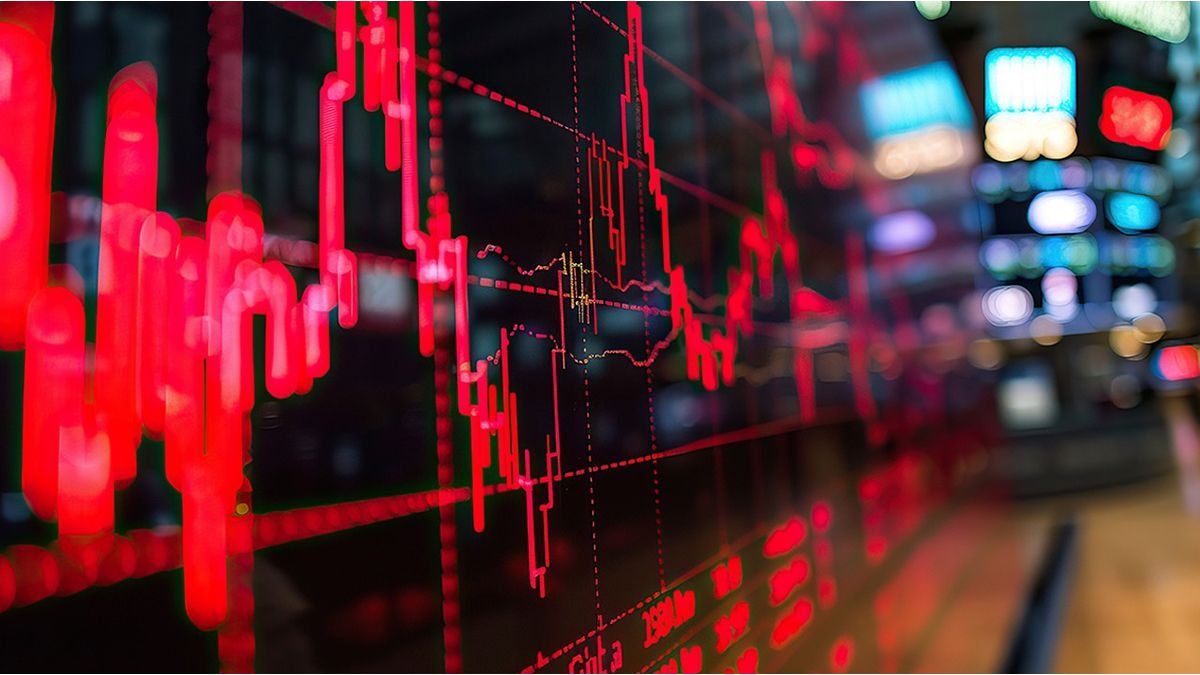It was necessary a record intervention in the MEP dollar (which was reflected in a historical record of operations of the reference Argentine bonds maturing in 2030) to mitigate a dynamic of rising implicit values, which was not worrying because of the level reached but because of the speed of the rise, which always arouses sensitivity in our country.
A greater increase in the dollar that would have reflected a greater gap (above 20%) would have an impact on inflation, the Government’s main objective. The accommodation up to this point should not influence internal prices and even improves the level of the blend dollar, which would favor the liquidation of exports.
In addition to power fulfill an electoral promisethe end of the stocks means from the official view that the level of activity could be higher if investments from abroad enter and exports increase, but it is evident that the main objective is to arrive with low inflation, even if activity does not rebound.
This is because the policy perceives that after very high inflation between mid-2022 and mid-this year, but with high inflation from 2018 to the present, society values disinflation and stability. Regardless of whether it is still high, which it is, or whether the Government itself has fueled it with the devaluation of December 2023, without measures to compensate for it to decouple the increase in internal prices and enabling a growth in delayed regulated prices above inflation itself.
Outside of the recurring comparisons that the Government and analysts make with the 90ssociety seems at this point to reflect a feeling similar to 1991. I am overwhelmed by hyperinflation/high inflation and I wish the Government would lower it, even if it means sacrificing jobs and salaries. As we have seen throughout history, society then demands other needs, especially when they are increasingly known to be affected or it is one’s own turn.
It is clear that with the exchange restrictions (stocks) the Government can manage the exchange rate. The relevant questions for 2025 are 1) Will the Government be able to open the stocks 2) linked to the previous one, will it be able to administer a controlled devaluation that strengthens reserves without impact on inflation?
Beyond establishing monetary and price preconditions pragmatically, the Government speaks generically of 2025. Whether such a measure is taken this summer or after the elections will depend on the evaluation made. 2025 elections.
The issue of timing is crucial. The decision is taken in the summer if there is agreement with the IMF so that an eventual jump in the exchange rate associated with the agreement allows us to reach the elections with low inflation or is taken after October.
Various governments adjusted electoral times to try to arrive with a better economy. The most paradigmatic case was the anticipation of elections that Alfonsín made in May 1989, after launching the Spring Plan. There were other cases. In the same way and as happened with various provincial cases in this century, María Eugenia Vidal wanted to unfold in 2019 to avoid a more critical moment for the economy and disengage from the national result. Who knows if it changed things, but Macri did not enable it.
The idea of suspending the PASO in addition to removing an opposition organization tool As various ruling parties thought before, in this case it is the opposite of Alfonsín’s case, speculating that the economy will be better later, which is key if we have to show low inflation rates and bet on a recovery in activity that would follow. to the decline of inflation.
Thus, what must be analyzed are the exchange risks of eliminating exchange restrictions and the risk of an increase in inflation associated with such a measure.
Currency risks
Exchange risks without stocks depend, as we saw, on global factors and national issues. The key is to ensure that the supply of currency is sufficient to meet demand.
This imIt applies not only the “photo” of having sufficient reserves for the initial moment but also to manage the dynamics. The “photo” includes factors that help: the “carry trade”, lower rates in the United States and the money laundering surplus. What does not contribute is the fall in the price of commodities and the devaluation of the currencies of emerging countries.
In the “movie” and analyzing the 2025 dynamics, the greater energy surplus contributes to stability, which is offset by greater imports and the negative balance of tourism. Next year is an election year that always includes greater exchange coverage of companies. The second quarter is always a quarter of surplus funds due to the seasonality of the harvest, but electoral uncertainty and geopolitical risks may reduce the “carry trade” in the winter of 2025, the most critical period until the elections.
The IMF is concerned about the deterioration of the external sector, with a current account deficit and the level of the exchange rate delay. That is why the discussion of the fine print is the level and dates of financing versus the exchange rate adjustment necessary to guarantee the sustainability of the program.
What defines the quantitative balance of supply and demand, for the eventual decision to leave the stocks, is the degree of support from the IMF and the obtaining of financial funds. If IMF aid exceeds US$10 billion Added to this are other sources (use of gold, repo and/or debt, in addition to Multilateral Organizations, renewal of the swap with China plus financing from the Bank of Basel), the Government will have more room to open the restrictions and have firepower to carry out a controlled devaluation, with a managed float or exchange rate table or eventually intervene successfully to avoid a crisis.
The Government will probably get a significant part of that amount, with some help from Trump and showing the result of fiscal policy and strategic alignment, which would allow him to open the trap on the new flow of profits and dividends and interests on private debt and transform the stocks of accumulated profits into BOPREAL bonds to reduce the demand for foreign exchange.
There are various IMF lines such as the Flexible Credit Line to supplement reserves for countries that have, as the line establishes, “solid institutional and economic frameworks.” “to address balance of payments needs and shore up market confidence during a period of high risk.” Like Mexico and Chile, which accessed said financing in recent years. The issue is that Argentina has not had “a history of stable access to capital markets.”
He Government Thus, the debt is proposed as a “bridge” until the RIGI and foreign investments in energy and mining generate genuine foreign exchange. The issue is that the dynamite of debt does not blow up the bridge.
Regarding financing and private sector investments that guarantee reserves, many companies and funds want to wait to see what happens in the elections. It is the case of the chicken and the egg. The Government asked them to “put in the money” to strengthen the Government and its policies and the private sector told them “win and then we will put in the money.” Will there be a compromise in this dichotomy? It will be a key.
According the available funds the Government will increase the US$ 200 dollars per month “savings dollar” technically asset formation (FAE) cWith an upward or less probable schedule, only if the funds obtained exceed US$ 20 billion will the FAE be completely released.
Price risk
A key issue is the transfer of a devaluation to prices in both its level and speed. This depends on the level of employment and activity, idle capacity and expectations. An increase in the exchange rate would be offset in imported products and inputs with the elimination of the PAIS tax.
Expectations have to do with the Government convince yourself that you have the firepower to make a “one-time adjustment” that does not imply significant price increases that trigger new devaluations as happened in 2018 and 2019.
Returning to the analysis of the desirable level of the exchange rate, a devaluation Less than 20% should not have a significant impact on prices. An increase of 20% to 40% would have an impact.
The economic team assumes that the “pass through” of a devaluation would be much lower than that of 2014, 2019 and that of August 2023, the highest (100% in three months). Let us remember that said devaluation was a commitment to the IMF to approve the release of funds.
The 40% devaluation of January 2002 hardly caused an inflationary jump. If the subsequent shot to $4 in April of that year. The devaluation of December 2024 was absorbed by the rise of the dollar by 90% in six months. What will be the exchange rate that the IMF will request and since when? is the million dollar question.
The low level of activity and economic openness favor disinflation. Increased credit and higher rate increases can generate inflationary pressures. An exchange rate jump not only increases the cost of imported products, but also drags up the price of services with rates that are indexed by exchange rate. This is the main problem with devaluing to limit short-term inflation.
The commercial opening As we saw, the external sector deteriorates but the Government prioritizes disciplining the prices and (margins) of goods producers. Critical issue for the UIA.
The Government also tries to contain the dollarput a “ceiling” on joint ventures to curb cost pressures. It will be necessary to see how the rise in aggregate demand is calibrated. They would be the heterodox elements of inflation control.
On the orthodox side, it is confident that the fiscal result will be maintained and that a greater demand for money will absorb the increase in monetary issuance, as happened these months. The greater supply of money was associated since August with the greater purchases of foreign currency by the Central Bank.
Greater demand for money could be achieved by raising the interest rate, But that makes Treasury financing more expensive and compromises the financial surplus, in addition to slowing down the recovery. How much orthodoxy and heterodoxy will there be if there are greater exchange rate pressures or the increase in credit puts pressure on prices in 2025?
As we saw The Government must avoid a devaluation, even controlledafter the summer to arrive with monthly inflation below 2% for the elections.
It is clear that the Government will be pragmatic and it will only open the trap if it can reconcile this measure that is sympathetic to middle sectors and companies with exchange and price stability.
Milei learned from Macri and Caputo from Caputo. We are talking about employing the necessary heterodoxy to stabilize in the short term and win elections. Objective that kills economic libertarianism if there are no more dollars. We will have to see after the elections, months that in Argentina seem like centuries.
Source: Ambito
David William is a talented author who has made a name for himself in the world of writing. He is a professional author who writes on a wide range of topics, from general interest to opinion news. David is currently working as a writer at 24 hours worlds where he brings his unique perspective and in-depth research to his articles, making them both informative and engaging.



